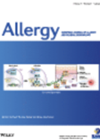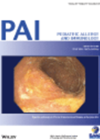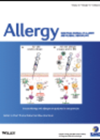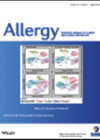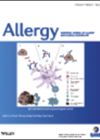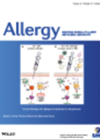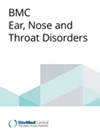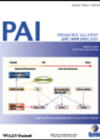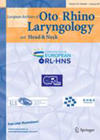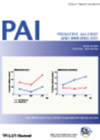
Journal Reviews
The hot nose
Capsaicin nasal spray can offer moderate to significant symptomatic relief to 70-80% of patients with idiopathic rhinitis (IR). Efficacy was also shown in lab studies. Nasal hyper reactivity (NHR), absence of allergy / infective rhinosinusitis, age limits (18-60), no anatomical...
Allergen immunotherapy and allergic rhinitis – EAACI guideline 2017
Allergic rhinitis (AR) is a common chronic childhood disease with considerable social burden and impact on quality of life, frequently necessitating treatment with various combinations of antihistamines and corticosteroids. The allergen immunotherapy (AIT), sometimes known as desensitisation therapy, can modify...
Mobile phones to assess productivity in rhinitis
Uncontrolled and moderate to severe allergic rhinitis (AR) has significant negative impact on work productivity. Work Productivity and Activity Impairment Allergic Specific Questionnaire (WPAI:AS) used to measure that impact showed this. Work productivity seems to improve when AR is treated....
Prostaglandin versus leukotriene receptor-antagonists in treatment of seasonal allergic rhinitis RCT phase II
Seasonal allergic rhinitis is very common. Failure to control the disease with mono-therapy leads to dual therapy treatment with less compliance and reduced quality of life. A prostaglandin receptor antagonist (ONO-4053) showed some efficacy in controlling allergic rhinitis in animal...
Precision medicine in allergic rhinitis and chronic rhinosinusitis
Precision medicine (PM) with its ‘four Ps’ (personalised, predictive, preventive and participatory) is about appreciating differences between individuals when offering management options for health problems. Multiple groups interested in rhinology such as EPOS and ARIA supported a review of the...
Apps in allergic rhinitis
Utilising smart-phone applications to gather data is an expanding field in medicine. However, it is not without limitations including bias. The European Innovation Partnership on Active and Healthy Ageing (EIP on AHA) introduced the Allergy Diary application as part of...
Poor allergic rhinitis control increases the overall costs
Allergic rhinitis and asthma are common and can have significant effects on quality of life. However, not many studies have focused on the economic effects. The authors of this study performed a large-scale (over 60,000 patients) observational study to analyse...
Sublingual house dust mite immunotherapy
House dust mite immunotherapy in allergic rhinitis was shown to be effective in trials with a relatively small number of participants. The authors of this study performed a multicentre double-blind randomised controlled trial to investigate effects of house dust mite...
Comparison of outcomes after septoplasty
For this prospective study, the authors assessed the quality of life (QoL) with the rhinosinusitis SNOT-20 (Sino-Nasal Outcome Test-20) questionnaire and the symptoms on a visual analogue scale (VAS) in all patients undergoing nasal septal surgery. The patients reported the...
Blocked nose in children with allergic rhinitis
Nasal obstruction is a classic symptom in children with allergic rhinitis. While the nasal obstructive disorders including septal deformity, turbinate hyperplasia and adenoidal enlargement are widely recognised in adult nasal blockage, their relationship with paediatric allergic rhinitis however, is scarcely...
Adenoidal hypertrophy in children with allergic rhinitis
Nasal congestion in children with allergic rhinitis can be confounded by adenoidal hypertrophy. This retrospective Turkish study examines this association in more detail. The sample studied was 566 children (age 2-18) that were diagnosed (based on ARIA guidelines) and treated...
Growing up smelling the roses
How often do we ask about sense of smell in children? Undoubtedly, the olfactory function is seldom formally assessed in the paediatric population, although evidence exists to suggest its potential links with handicap in children’s learning and development. This large...

